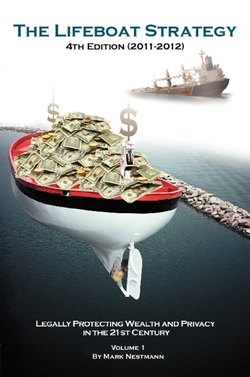Читать книгу THE LIFEBOAT STRATEGY - Mark Nestmann - Страница 12
На сайте Литреса книга снята с продажи.
These Are NOT Isolated Incidents…
ОглавлениеThe mainstream media keeps you well informed about celebrity sex scandals, drug abusing sports stars, and politicians who cheat on their spouses. But, I suspect you haven’t read much about the following trends:
• Criminalization. In 1789, when the first U.S. Congress met, there were three federal crimes: treason, counterfeiting and smuggling to avoid tariffs. Today, there are more than 4,000 of them. Congress enacts hundreds more laws annually, and the bureaucracies spawned to enforce them churn out more than 80,000 pages of regulations that carry the force of law each year. Many of these statutes and regulations impose criminal sanctions for their violation.18
• Erosion of electronic privacy. In 1967, the Supreme Court ruled that police needed to obtain a search warrant in order to wiretap your phone.19 That principle still applies, but in the intervening years, that protection has seriously eroded. For instance, police can obtain a list of phone numbers you dial or receive calls from, without a warrant.20
• Expanding theories of legal liability. The concept of “strict liability” holds that even if you’re in no way negligent, you may still be liable for damages in a lawsuit.21 And under the theory of “joint and several liability,” someone suing you can hold you “fully financially responsible” regardless of your individual share of the liability. If you’re 1% responsible for a $10 million loss, you might be required to compensate the successful litigant the full $10 million!22 That’s what made possible the lawsuits against parties with tenuous connections to the Rhode Island Station nightclub fire. Almost every state has some form of joint and several liability statute in force.
• Soaring property seizures. In 1984, Congress enacted a tough anti-drug law with greatly enhanced civil forfeiture provisions.23 Until then, revenues from civil forfeitures came to only a few million dollars annually. Nearly all these revenues resulted from seizures of vehicles and boats used to smuggle illegal drugs or other contraband across U.S. borders. State and local civil forfeiture laws were virtually non-existent. However, the law permitted police authorities to keep most or even all of the property they confiscate, or sell it to generate revenue. This encouraged states to enact their own civil forfeiture statutes. The results were predictable. In 2008, the Department of Justice’s “Asset Forfeiture Fund” generated more than $1.2 billion in “net forfeiture revenues.” And that figure doesn’t include billions more in civil forfeitures by state and local police authorities.24
You may be saying, “Why didn’t I hear about this? Why weren’t the newspapers shouting about these changes? Forget it, it’s the media—always pushing their own agenda.”
But don’t be too hard on the media. Sensationalism sells. Analyzing and reporting on legal trends isn’t nearly as lucrative. And while it’s easy to write about a specific lawsuit, regulation, or court decision, understanding the trend these legal developments represent is a lot more difficult.
